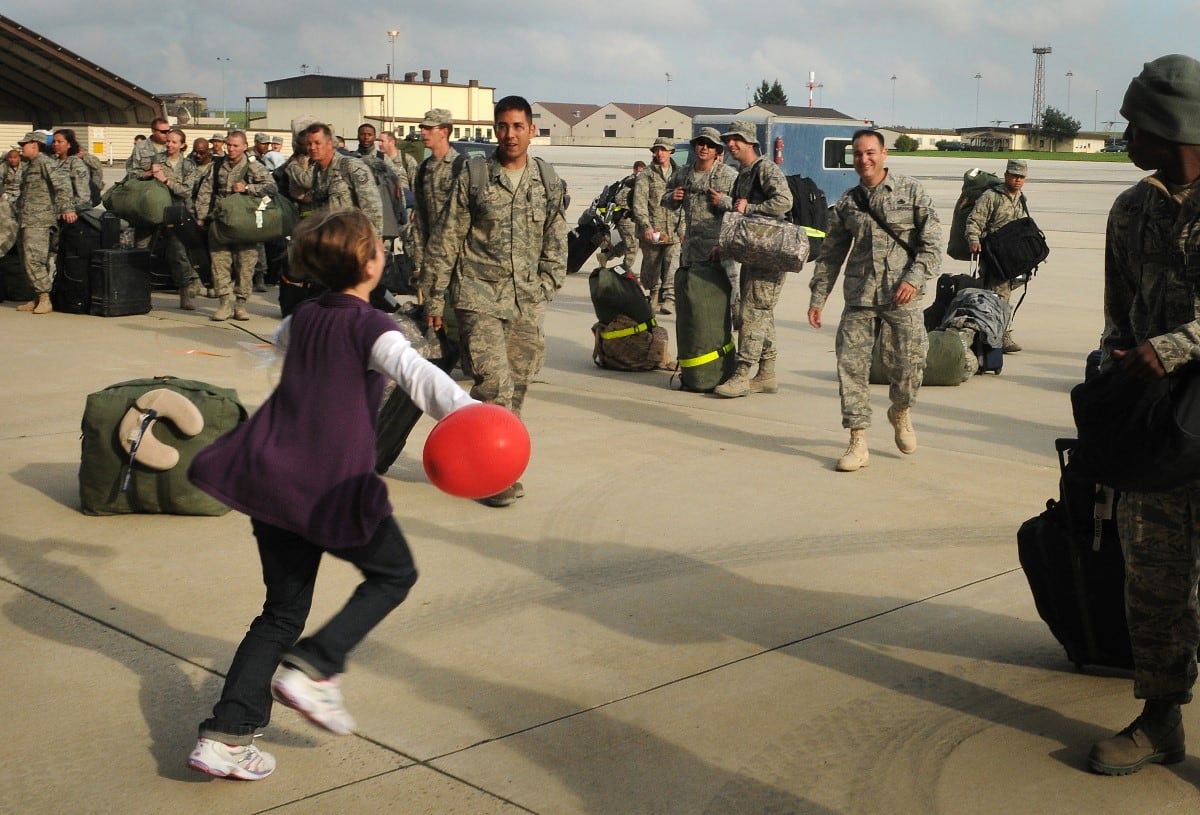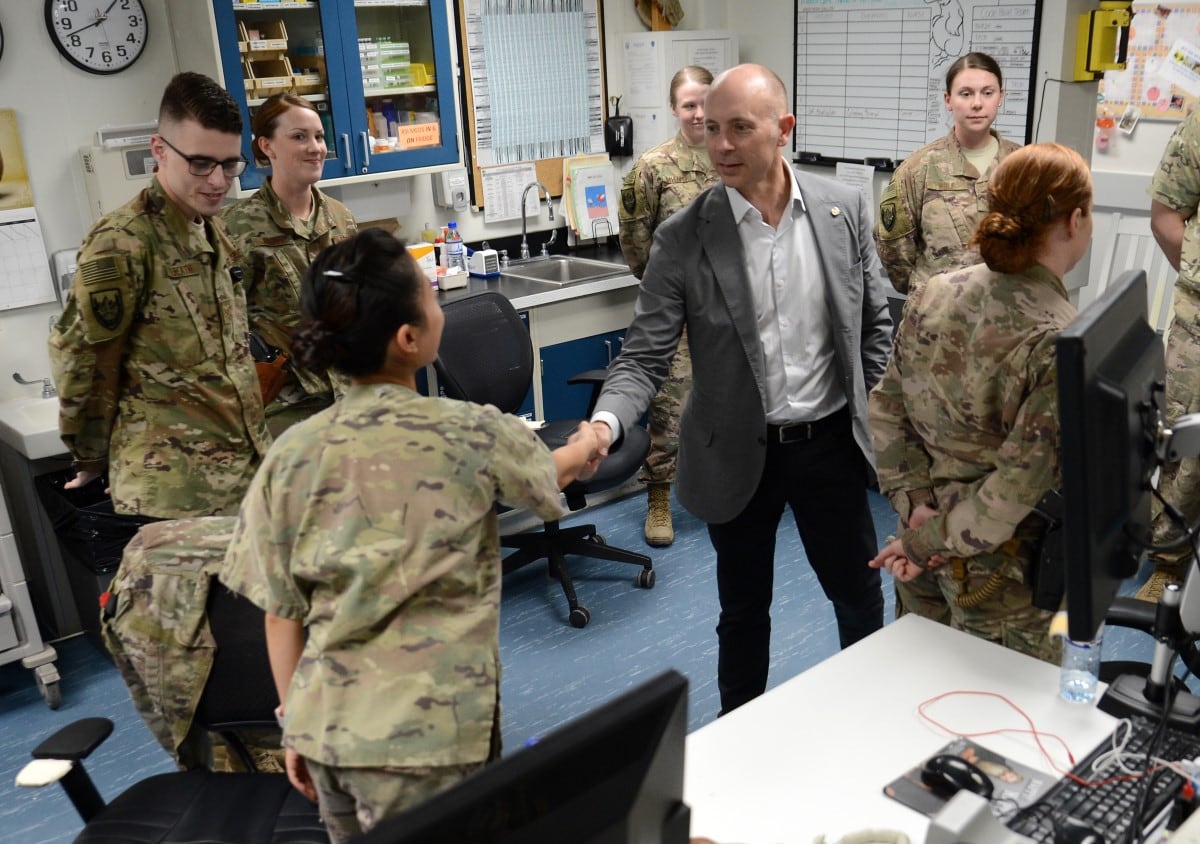Welcome to the modern Air Force: A place where experienced firefighters sometimes have to waste time taking an online course in which they “learn” how to use a basic fire extinguisher.
But not for much longer.
Finally, the Air Force is taking aim at this bureaucratic nightmare. As part of its ongoing effort to root out unnecessary and redundant training and other ancillary duties, the service is working on giving squadron commanders and senior noncommissioned officers more leeway to decide when such training isn’t necessary, or when it is needed, and tailor it to how airmen learn..
“There’s a finite number of hours in the day, and days in the week, and weeks in the year,” Shon Manasco, the Air Force’s assistant secretary for manpower and reserve affairs, recently told Air Force Times. “We’re going to have to make some risk-based decisions based on all the things that, at the local squadron level, that they’re trying to balance. And if we have confidence in our squadron commanders and our senior NCOs, we’re saying, we trust that you’re going to make the right risk-based decisions.”
For nearly two years, the Air Force has made a priority of cutting out annoying, time-wasting and sometimes unnecessary duties and training ― known to many airmen by the slang term “queep” ― that are often piled on top of airmen’s usual responsibilities.
Most recently, U.S. Air Forces Central Command slashed its pre-deployment paperwork and training requirements to give airmen more time with their families before they ship out to the Middle East.
The commander of the 1st Special Operations Wing also recently issued a memo giving group and squadron commanders more leeway to figure out how best to train their airmen, and scrapping computer-based training whenever possible.
During an interview at his Pentagon office, Manasco ― who supervises how the service manages its military and civilian personnel ― outlined ways he thinks the Air Force can trust squadron commanders and other leaders in the field to make common-sense decisions on how they manage their airmen’s training requirements.
After all, he said, they see those airmen day in and day out, and who else better knows what they need and how they learn?
“I have a lot of confidence in their ability to make those decisions at their level, versus us here in the Pentagon making calls around how someone in a squadron can best master this skill,” Manasco said.
RELATED

Part of that includes considering airmen’s career fields when deciding what training they need, he said ― or don’t need.
In addition to the example of firefighters being made to re-learn how to use a fire extinguisher, Manasco mentioned Green Dot sexual assault prevention training.
An employee of an Air Force base’s sexual assault prevention and response office might not need to go through the usual Green Dot training mandated for other airmen, he said, and that office’s supervisor might decide to scratch it for those employees.
Pre-holiday weekend safety briefs are another place where squadron commanders can streamline, or better tailor the briefings to particular airmen, he said.
“If the safety briefing before a four-day weekend is longer than the safety briefing on a live-fire exercise, there’s a chance that someone might conclude that we’re not making a good risk-based decision in that instance,” Manasco said.

Young, single airmen who are in high-pressure AFSCs might have more of a “propensity to blow off steam in a certain way,” and might be in more need of a reminder of the dangers of such risky activities.
Other, older NCOs and officers who have families are probably going to spend the long weekend watching their kids on a tee-ball field, he said, and might not need another warning not to drink and drive.
A commander who knows his airmen will also know who is more at risk and should have the ability to focus on those populations.
“I want to put commanders in a place where they can be smart about how to talk about safety during a four-day weekend differently, between those two groups,” Manasco said.
The Air Force is still working on guidance to advise commanders on how to make these decisions on training “so they understand what their left and right limits are,” Manasco said.
In addition, the Air Force’s top leaders ― Secretary Heather Wilson, Chief of Staff Gen. Dave Goldfein and Chief Master Sergeant of the Air Force Kaleth Wright ― signed a memo April 27 authorizing commanders and supervisors to conduct almost all mandatory ancillary training “as they see fit.”
In some cases, that could mean scrapping the hated computer-based training, or CBT, that was previously required and replacing it with face-to-face training, if a supervisor feels that’s best.
“Computer-based training will no longer be the primary tool for providing this information,” unless law, Defense Department policy, or a commander directs otherwise, the memo said.
The memo was first posted on the unofficial Air Force amn/nco/snco page, and later confirmed by the Air Force.
Computer-based training isn’t necessarily a bad thing, Manasco said. In fact, it can be very useful, especially for National Guard and Air Force Reserve airmen who are only on duty intermittently, or for airmen who learn better that way.
But it’s not the only way to learn. Key to the Air Force’s effort is recognizing that people learn differently, and making it possible to tailor lessons to those differences. Some people, like Manasco, are visual learners, he said, and others are more auditory.
“Do we really need a 30-minute CBT [computer-based training session] on how to operate a fire extinguisher?” Manasco said. “For some people, that CBT is invaluable, and it’s perfect. There’s another group that it just doesn’t make sense, because they can master that skill in two minutes.”
Manasco said the Air Force will provide resources or training to squadrons or other units to help them learn the best way to train their airmen, if they opt for something besides CBT. That could include providing subject matter experts or staging “train the trainer” sessions on specific subjects.
More changes are coming to streamline training, but Manasco said there’s no specific time frame for rolling out these changes. Instead, the Air Force wants to move forward as soon as possible when such opportunities are identified, or, in some cases, bundled together with other changes.
“We just want to make smart decisions, because we have confidence in our leaders at those squadrons, that they’ll make really good decisions,” Manasco said.
Stephen Losey is the air warfare reporter for Defense News. He previously covered leadership and personnel issues at Air Force Times, and the Pentagon, special operations and air warfare at Military.com. He has traveled to the Middle East to cover U.S. Air Force operations.





